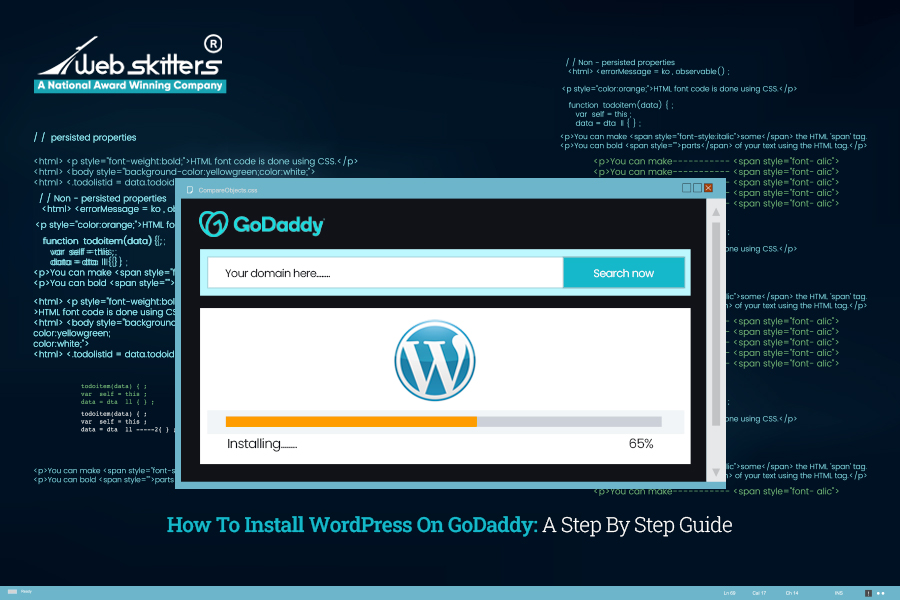“Getting a quality website is not an expense but an investment.”— Dr. Christopher Dayagdag, CEO of Marketlink Web Solutions and author of From Branding to ROI. This quote signifies the importance of an SEO-friendly and quality website. This can drive significant traffic from prospects who are interested in your service or product. So, building a WordPress website isn’t enough for your business but having a well-implemented WordPress SEO is!
Without proper WordPress SEO, your website may struggle to show up on search engines — meaning fewer visitors, fewer potential leads, and slower business growth. Good SEO helps your brand get discovered, stay visible, and build trust online.
You can also explore our in-depth article on the 9 Benefits of Custom WordPress Website Development to understand how a tailored site can further enhance your digital presence.
In this era of digitization, having a website is not optional; it’s a necessity and if you have chosen WordPress to build that, you’ve made a wise choice. According to Statista, WordPress.org is the leading website builder in the world, with an astounding 68% global market share. However, this also means that you’ve to stand out from a vast sea of WordPress websites in terms of aesthetics, functionality, and most importantly SEO. Hiring expert WordPress developers can help you achieve that.
Still confused about how you can enhance your business website’s visibility through WordPress SEO? Don’t worry as we provide a detailed guide for you!
In this guide, we will walk you through the WordPress SEO best practices and the reasons why focusing on local SEO is paramount. We will also discuss the two renowned WordPress SEO plugins (Rank Math and Yoast). Not only that, this guide will provide the most common mistakes to avoid when it comes to SEO for WordPress. But first, we have to understand the importance of SEO and the connection between SEO and WordPress. So, without further ado, let’s dive right in!
The Importance of SEO
As a business owner, we’re sure that you want your website to attract significant traffic. Who doesn’t, isn’t it? After all, your business website is your digital showroom where you can showcase your services or products. SEO can help you achieve just that!
Simply, SEO or Search Engine Optimization is generally a set of techniques and practices with the sole intention of boosting website rankings among SERPs. It entails tweaking site structure and mitigating technical issues, all while targeting specific keywords throughout your website content.
Hence, SEO is important to:
-
Improve Visibility: Optimization of WordPress SEO for a site increases the chances of it ranking at the SERPs’ top results. This boosts the visibility of your business, ensuring more people interact and engage with its content.
-
Generate Traffic: Do you know that the top three Google results get 54.4% of all clicks? With proper WordPress SEO techniques, you can get your site into that position, driving invaluable traffic and business growth.
-
Drive Conversions: On average, organic traffic is much more efficient in driving conversions that any other sources. This has a direct impact on your revenue. So, prioritization of WordPress SEO is paramount.
What is the Link between SEO and WordPress?
The popularity of WordPress when it comes to website creation can never be overstated. So much so that it powers nearly 40% of all websites that we see on the internet. WordPress is a CMS (Content Management System) that allows users to create complex and simple websites through thousands of templates, designed by the community.
While this CMS provides in-built SEO functionalities like custom meta descriptions and titles, it also offers numerous plugins that enhance its in-built optimization capabilities. This provides a smooth and seamless way for websites to rank in the SERPs.
A Quick Look at the WordPress SEO Best Practices
Now that we understand what WordPress SEO really is, how it impacts your business, and the connection between WordPress and Search Engine Optimization, it’s time for us to venture into different techniques that you need to implement to rank higher on Google.
On-Page SEO WordPress Practices
1. Meta Description and Page Title Optimization
Undoubtedly, meta description and page title are two crucial on-page elements for WordPress SEO.
Page title, as the name suggests, is a specific page’s title. It is displayed over the tab of a browser and as the primary link in SERPs (Search engine result pages). On the contrary, meta description can be defined as the brief summary of the content of the page. It is displayed just below the page title on a web browser.
In WordPress, you can find these options in the “General Settings” of each post or page. You need to incorporate your focus keyword in both of these. However, you’ve to refrain from overstuffing it.
2. Header Tags for WordPress SEO
The header tags also goes by the name “HTML heading tags”. These are used for structuring content on a page. The H1 tag is a crucial header tag which should be used for main page title. H2s, on the other hand, can be subheadings and H3s can be sub-subheadings, and so on.
When it comes to WordPress, formatting options are available in “text editor”. Through this editor, you can add header tags to the content. Remember, these headers are not only to enhance the aesthetic appeal of the content but to improve readability and user experience.
As Google thrives on providing exceptional user experience to its users, you can leverage these tags to make the most out of it. Breaking up the content and incorporating primary keyword in the headers can help SERPs understand the context and intent.
3. Alt Tags (Images)
Alternative text tags or Alt tags are a set of HTML attributes that describe an image. These Alt tags assist search engines in understanding the context of an image and help them describe it to users who can’t see the image (screen readers).
In WordPress, you can add or edit alt tags by going to image properties in WordPress Media Library. Remember to include a brief and accurate description of the image content, when adding or editing alt tags. In case, the image is keyword-relevant, be sure to incorporate that.
Technical WordPress SEO Best Practices
1. Sitemap Setup for WordPress SEO
XML Sitemaps in WordPress are the files that list all website pages with their metadata like last updated date of the page and the relevance of the page as compared to others on the website. This sitemap can assist search engines understand the content and structure of the site, ensuring smooth crawling and indexing by Search engines.
In WordPress, you have to add plugins for setting up sitemaps. Plugins like Google XML Sitemaps helps in creating your website’s sitemap. After the generation, you can submit it to Bing or Google through their “Webmaster Tools” portals.
2. Strengthening Security through SSL/HTTPS as Technical SEO WordPress
Secure Sockets Layer (SSL) is a security feature that helps in data encryption during its transmission between the web browser and your website. The SSL-incorporated sites have an “https://” prefix in their URL along with a padlock icon.
Alongside strengthening security, SSL also has a positive impact on WordPress SEO. Google announced giving ranking boosts to websites with a SSL certificate in 2014. Although the boost is small, it can make you stand out by prioritizing user security over anything else.
To incorporate an SSL certificate on your WordPress Website, you have to buy an SSL certificate from a CA (Certificate Authority) and install the certificate on the server. Once you get the SSL certificate acquired, you can do the activation for your website by going to WordPress’s “General Settings”. In the latest WordPress 6.8 update, the password hashing algorithm has also changed which you need to consider.

3. Redirection of Changed or Deleted Pages for WordPress SEO
When you change the URL of a web page or delete it, it is crucial to redirect the previous URL with the present one (if applicable). This will help you avoid the “404” error. Redirection is especially important for pages with incoming links. It is so because, without proper redirection, the links become broken.
In WordPress, use the Redirection plugin to manage these redirects. You have to simply install Redirection and add the old and new URLs. You can even use a .htaccess file to manage redirects. However, this process requires extensive technical know-how.
These are just some of the key technical WordPress SEO best practices. But that’s not all there’s a lot more that goes into building a high-performing WordPress website. To dive deeper into how expert development can elevate your site, check out our article: 10 Reasons to Hire WordPress Developers for Your Website.
Advanced WordPress SEO Practices
1. Schema Markup for WordPress SEO
This is one of the most effective WordPress advanced SEO techniques that assist search engines gets the context of content on your site. Incorporating schema markup can allow additional business information to be displayed, including services or products. This is displayed through SERP snippets or enhancements.
Also note that there are various schema markup, entailing events, recipes, products, and so on. By integrating these in your WordPress you can have substantial impact on your SEO. In WordPress, usage of plugins like “All in One Schema Rich Snippets” can allow you to add schema markup to your website content.
2. Leveraging Social Media for Advanced WordPress SEO
In an era where social media has 5.24 billion users worldwide out of 5.56 billion internet users, not utilizing these platforms for SEO can be a setback for your business. So, social media is a potent tool for WordPress SEO in a plethora of ways.
-
Firstly, social media builds a stronger presence for your business, allowing brands to build trust and awareness among its customers and prospects. This can drive greater organic traffic to your website, positively impacting your SEO efforts.
-
Secondly, social media metrics or indicators (likes, shares, and comments) can have significant impact on the search rankings of your site. This can be further strengthened if you collaborate with influencers to share the content.
Leveraging the potential of social media for SEO requires active engagement and presence of your business in social media platforms. You have to assess and identify the platform where your target audience is present.
Then, you have to be consistent in your social media efforts. This means you have to engage and intrigue the audience with sharable content. That’s not it as you also have to interact with the followers while promoting your content and website.
In WordPress, adding plugins like Jetpack can help. This plugin will help you add buttons to your site to share your content on social media seamlessly. Moreover, plugins like Yoast SEO can help you generate SM descriptions and titles for the content.
3. Backlink Creation
Backlinks or inbound links are links from different sites leading to your WordPress website. Having quality backlinks improve site’s trustworthiness and authority for search engines. This leads to enhanced rankings and improved organic traffic.
However, backlinks from relevant and reputed sites matter. You should avoid link buying or link scheme participation as these indicate spam and fishy strategies. So, emphasize creating exceptional and valuable content that will encourage other websites to link back to you.
When talking about WordPress sites, you can leverage tools like Ahrefs to track backlink profiles and identify opportunities for improvement.
Why Prioritizing Local SEO is Important?
Do you remember the time when having a website was enough to get found locally? Those days are gone! Today, Local SEO is a crucial aspect of search engine optimization strategies that businesses leverage to reach their local customers. However, local SEO seems to be the biggest hurdle small businesses face in their SEO efforts.
In fact, most WordPress sites on the internet aren’t well-optimized for local searches. But, in this section, we will walk you through its importance for WordPress SEO along with optimization tips to climb the SERPs’ ranking ladder.
What Local SEO is!
It is an SEO technique that allows local businesses to get found by local users on the internet. For instance, if you’re a digital marketing business, local SEO can make you visible at the top of SERP rankings.
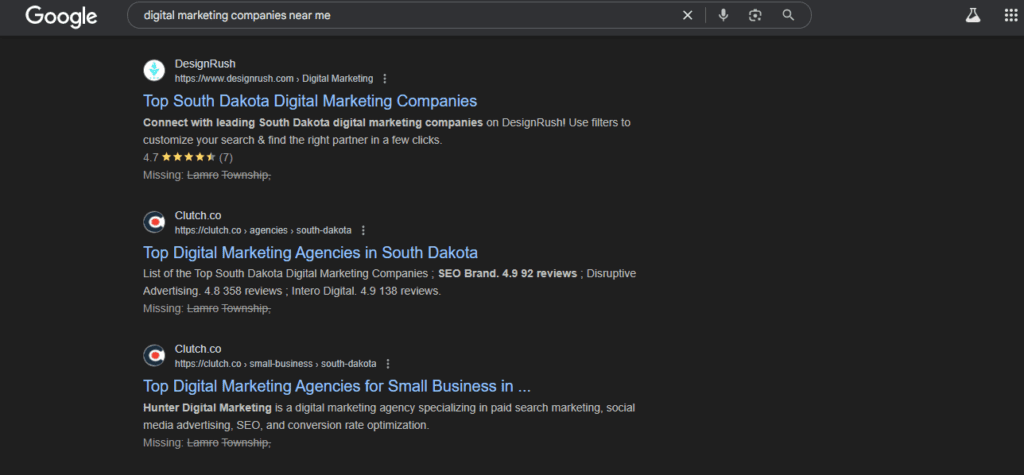
Search engines like Google utilize algorithms to identify a user’s location and offer personalized local results. It analyzes the IP address of the user and the query while providing business listings associated with the businesses at that location.
So, Local SEO can elevate your online presence and drive you significant organic traffic from your locality. This is the reason why local SEO is crucial for small businesses.
What about the Ranking Factors for Local SEO?
The SERP ranking factors are the factors that search engines consider when deciding which businesses to rank at the top. Here are some of the key factors:
-
GBL (Google Business Listing): This free-to-use tool enables businesses to manage their online presence across maps and search. Having listed in this can make it easier to find your business.
-
Reviews: Social proof is a big factor. These reviews just provide that. They impact local ranking as they show prospects what other customers (past) thinks about the brand.
-
Relevance to Query: This allows perfect alignment of your keywords with the search query.
-
NAP Consistency: NAP is an acronym for Name, Address and Phone Number. Maintaining the consistency across all the platforms is necessary to avoid any form of confusion among the users.
-
Proximity to the User: This factor considers your closeness to the searcher. So, SERPs often rank businesses that are closest to the user.
Best Local WordPress SEO Practices
Now that we are clear about Local SEO, let’s explore how this can be leveraged for a WordPress site. Here, we will walk you through the top 3 Local SEO practices for your WordPress business website.
1. Installing a WordPress Plugin with Local SEO Functionality
While you may try GMB (Google My Business), installing a plugin from a pool of extensive local SEO plugins can make it easier. These plugins offers functionalities designed specifically to enhance your local SEO rankings. One way to do this is by integrating Schema Markup as this gives the search engines your business information.
Alongside making your site crawlable by search engines, schema markup also helps make business information more engaging, interesting, and clear. This can make you stand out among your competitors in the area, enhancing CTR massively.
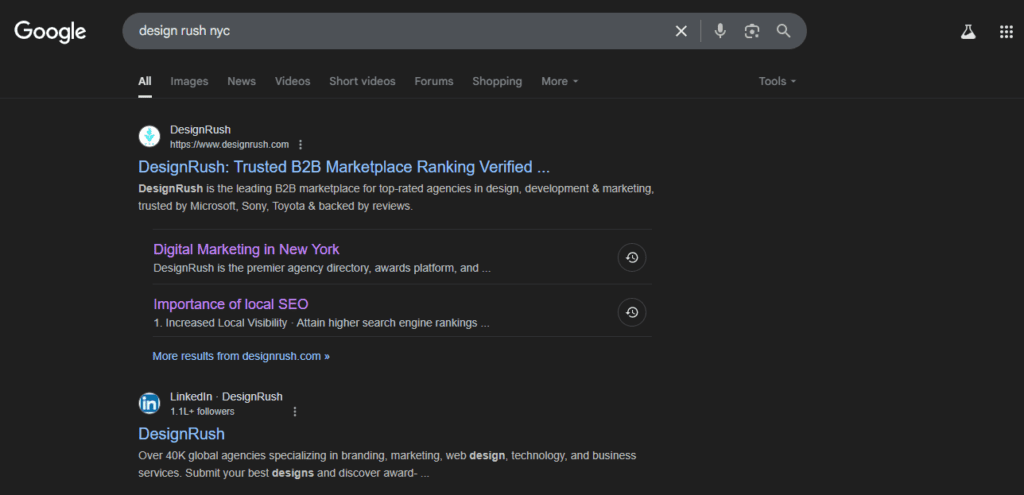
Here is an example of the “Design Rush nyc” query which shows snippets due to its schema markup! You can check the complete schema markup by assessing it through the “Rich Result Test” by Google. For the website of Design Rush, it showed this.
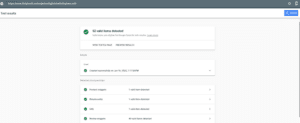
(Source: Rich Results Test)
However, for a WordPress website, you will get plugins to do the job. One such SEO plugin is “All in One SEO (AIOSEO)”. This is especially helpful as it can set up the schema without coding.
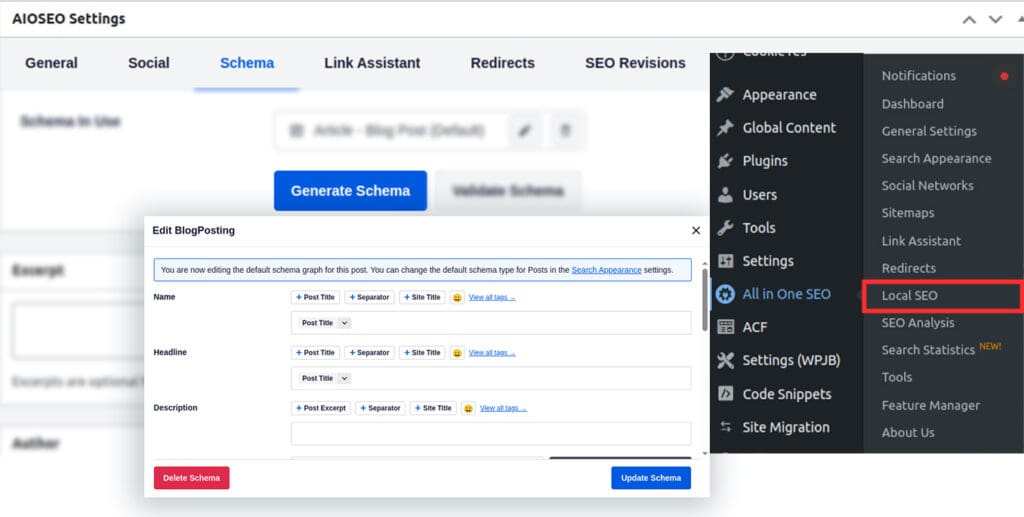
wpbeginner
2. Local Keyword Research for WordPress SEO
Before diving into content creation, you have to understand online user queries in your area. A comprehensive keyword research (local) is an important WordPress SEO tactic that can help you understand the user requirements.
This keyword research is somehow similar to global keyword research. However, local keyword research aims to find locality-oriented search terms like “best digital marketing services near me” or “digital marketing services in xyz city”.
A renowned tool for this purpose is SEMrush. This tool allows you discover specific keywords along with the search volume while showing you the competition (ranking difficulty) based on your location.

wpbeginner
3. Adding Google Maps to your Site for WordPress SEO
The above mentioned WordPress plugin (AIOSEO) can be used to add GML (Google Map Listings) to your WordPress website. However, the addition of maps into your website cannot skyrocket your local SEO overnight but can increase your ranking chances.
-
Local SEO Indicators: Integrating Google Maps on your site strengthens local WordPress SEO indicators, indicating that your business has a physical location.
-
UX: A website with a map improves UX, allowing people to easily see the location while planning a visit to your physical store. Moreover, this increases their time on your site which strengthens Google ranking for WordPress.
-
Social Proof: Social proof is a major catalyst for Google or SERP rankings. The reviews on Google Maps can serve as the social proof, portraying a positive experience of your prior or existing customers. This increases brand trust and reputation, encouraging more and more people to visit your WordPress site.

Airbnb is one such website that effectively makes use of Google Maps for an enhanced user experience.
Which WordPress SEO Plugin to Choose: Rank Math vs Yoast SEO
In this section of the WordPress SEO guide, we will discuss the two most popular WordPress SEO plugins which are Rank Math and Yoast SEO. We will explore them in three primary dimensions. Let’s get to it.
1. Yoast SEO vs Rank Math: Features
When it comes to SEO, the features a plugin offer makes all the difference for your website. Rank Math offers a plethora of free features, much more than Yoast. This doesn’t make Rank Math better as the key thing to consider here is the usage and requirements. However, these extra Rank Math features are an added advantage.
Rank Math for WordPress (Free Features)
-
Setting SEO meta descriptions and titles: You can craft templates that applies to the content automatically. You can even adjust these titles and descriptions as per the content requirements.
-
Social Media: You can manage images and texts for X (formerly Twitter) and Facebook.
-
Keyword Assessment: Enter the keywords and identify the extent of content optimization required.
-
XML Sitemap: You can create your personalized XML sitemap, which is not customizable in the default sitemap feature.
-
Schema Markup: You can easily set up a Schema Markup for your site while managing the Schema Markup of individual content as well.
-
Search Console: You can link your site to GSC (Google Search Console) to submit sitemaps and monitor your site periodically.
-
Image SEO: Adding titles or alt texts can be done to enhance image SEO.
Note: All these features are modular in nature. This means you can smoothly disable the features you aren’t planning to use.
Yoast SEO Plugin (Free Features)
-
Meta Descriptions and Titles: Create templates that apply to content automatically or manually add them to content pieces.
-
Sitemap: You can craft a customizable sitemap.
-
Focus Keyword Assessment: Yoast SEO allows only one focus keyword analysis.
-
Schema Markup: It allows site-wide and individualized Schema Markup.
-
Search Console: Monitor your site seamlessly with Search Console.
-
WooCommerce SEO: You can add descriptions or titles to products for your E-commerce site.
-
Cornerstone Content: Mark the most relevant pages as “Cornerstone” and optimize them accordingly to acquire more internal links.
2. Yoast SEO vs Rank Math: User Interface (UI)
Rank Math
In case you are using WordPress Block Editor, Rank math comprehensively integrates into this. You wouldn’t have to use “meta box” in classic editor.
Another important functionality of this plugin is the Analytics Interface. Relying on your subscription, you can track:
-
Search Control reports (Free)
-
Keyword performance and ranking (Paid)
-
Traffic stats from GA (Google Analytics) (Paid)
Yoast SEO
This tool gives you 2 specific ways to set up WordPress SEO information while you work on the editor.
- You get a “meta box” just under the editor (Block and Classic).
- Using Block Editor will enable a Yoast SEO option on the sidebar.
It is suggested that the meta box approach be used when working with Yoast SEO.
3. Yoast SEO vs Rank Math: Keyword Research for WordPress
Both of these plugins allow you to do keyword assessment and content optimization based on the results. So, it depends on your preference when it comes to the usage. However, one major advantage of Rank Math over Yoast SEO is that Rank Math lets you analyze multiple focus keywords, even in its free version. On the contrary, Yoast SEO allows only one in the free version.
Rank Math
With this WordPress plugin, one of the good things is that you can do multiple keyword analysis, even in the free version. You have to enter the focus keywords and it will give you a comprehensive result along with providing specific suggestions for optimization. You can even toggle between the applied keywords by clicking on them.
Yoast SEO
Yoast SEO is a plugin that allows you to analyze only one keyword for a particular content piece in its free version. However, you can do multiple keyword analyses with the premium version. The assessment results are somewhat the same as those of Rank Math. However, Yoast SEO doesn’t provide a detailed assessment (absence of numeric value) with only three colour-coded options.
Common WordPress SEO Mistakes to Avoid
We know that working on WordPress SEO can sometimes be overwhelming for you. So, in this section, we will highlight the top 3 common WordPress SEP mistakes to avoid.
1. Keyword Stuffing as a WordPress SEO Mistake
It is the infamous process of inserting too much keyword into the content to manipulate the search engine and rankings. SERPs like Google consider this a spammy technique that can hurt the rankings and UX.
To avoid this issue, you have to focus on creating informative, relevant, and valuable content, incorporating the focus keywords naturally. Avoid forcing keywords into the content excessively.
2. Neglect Header Tags
Header tags maintain information hierarchy within the content. Search engines leverage these tags to understand the context of a page and determine the relevance of the page with respect to keywords.
Appropriate and semantic usage of these tags on your site is crucial for WordPress SEO success. So, use H1 for the title, H2 and H3 for subheadings. Avoid using these tags for styling or keyword stuffing.
3. Failure of Image or Media Optimization
Image and media optimization on your WordPress website is necessary for certain factors.
-
Firstly, unoptimized and large files can reduce the loading speed of websites, affecting SEO and UX.
-
Secondly, providing relevant and descriptive image alt tags and file names can assist search engines in understanding the context of your media, improving its visibility in searches.
So, image optimization for a WordPress website by compressing and resizing large images and proving relevant alt tags can go a long way for your WordPress SEO.
Maintenance and Periodic Assessment of WordPress SEO
Implementing WordPress SEO strategy is not enough. You’ve to analyze and monitor it periodically to make the most of it. The usage of tools like GA and GSC to improve and monitor your WordPress SEO effort is paramount in this context.
Though there is a cheat sheet we made just for you that we think may be helpful: WordPress 6.8 Secrets Every Creator Should Know.
Google Search Console (GSC) is a free-to-use tool by Google that enables maintenance and monitoring of your site’s presence in SERPs like Google. It provides insights about your website performance, including keywords, rankings, indexing, or crawling errors along with security issues.
Google Analytics (GA) is another free-to-use web analytics service that provides a detailed assessment of your site performance and traffic. It tracks visitors and their behaviors, including traffic sources, popular pages, and visitor actions on your WordPress site.
The usage of tools like GSC and GA, you can understand and be clear about your site performance in search and identify issues for improvement. For instance, you can look at the pages that aren’t ranking for a particular keyword or you have an enhanced bounce rate. With these data, you can re-adjust or recalibrate your WordPress SEO to mitigate these problems.
Webskitters Technology Solutions: Your Reliable WordPress Development Company
This comprehensive guide covered various SEO tips and techniques that you can implement for your WordPress SEO to rank your site on Google and other SERPs. From on-page, technical SEO, to advanced SEO like social media and schema markup, there are a plethora of ways to enhance visibility and boost performance in search engines.
By following these specific techniques and tips outlined, you can build a strong foundation of SEO success for your WordPress site. Also, consider local SEO for your site which can enhance your visibility in your region and drive significant conversions.
Make sure to avoid the above-mentioned common mistakes while working on your WordPress SEO. Furthermore, monitoring and assessing your site’s performance through GSC and GA can be done to further improve the site’s performance. If you want to spare yourself the headache, custom WordPress development services can help.
Still unsure about where to start with all these? Look no further! Webskitters Technology Solutions has got you covered.
Our goal is to provide your business a robust digital platform, helping you excel in your domain. We have a pool of expert WordPress developers, experienced in building cutting-edge custom websites that align with your business requirements. Be it WordPress SEO or any other needs, Webskitters is a leading WordPress development company that ensures your WordPress website stands out in this highly competitive business landscape, driving long-term success.
Contact us today and let’s make something extraordinary together!

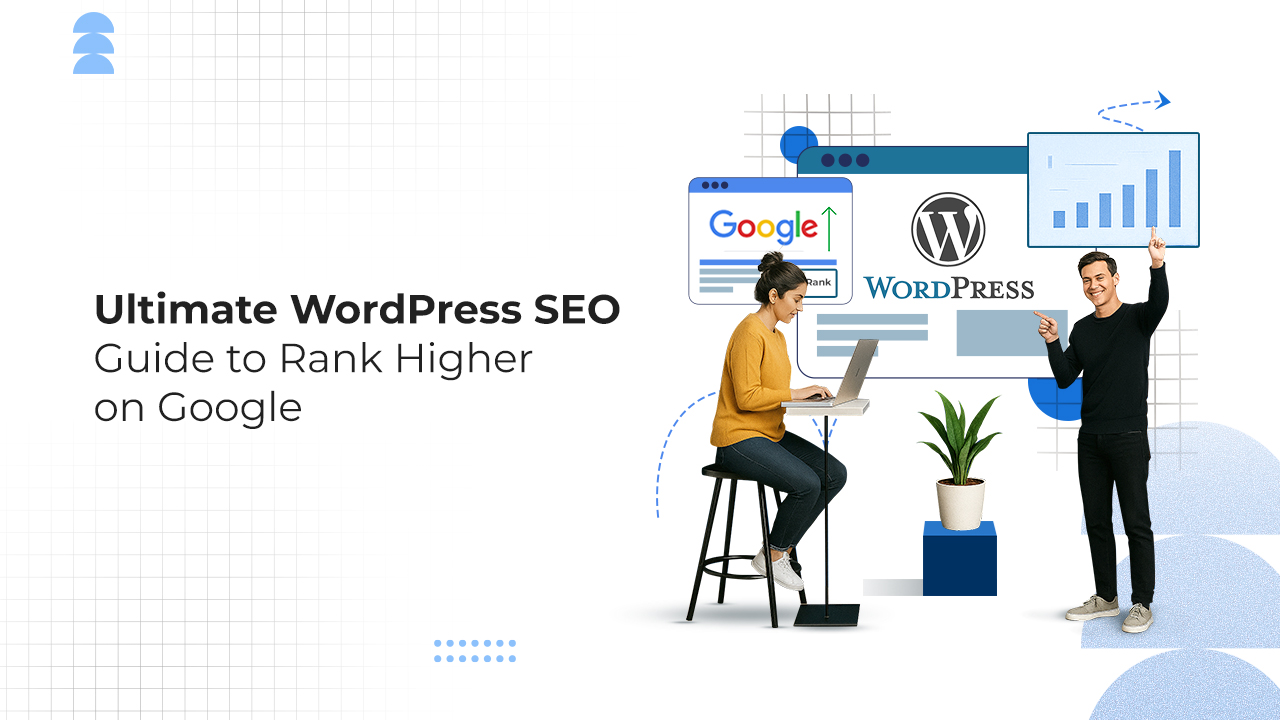
 June 30, 2025
June 30, 2025 

